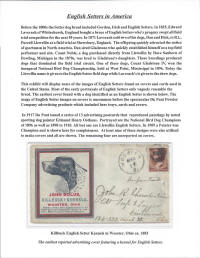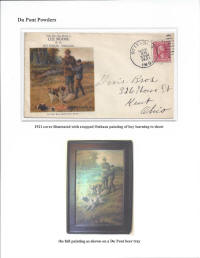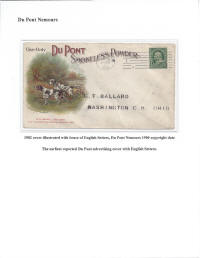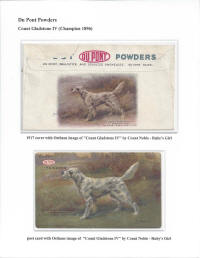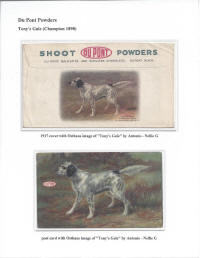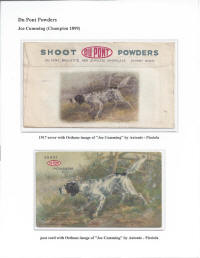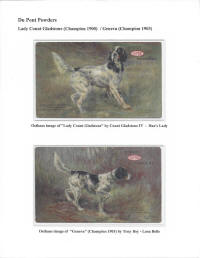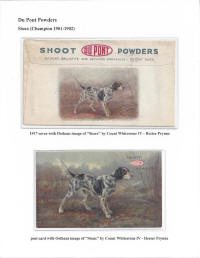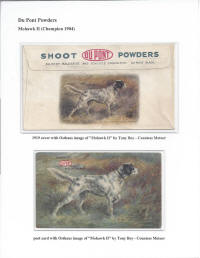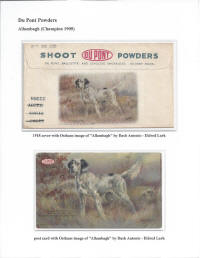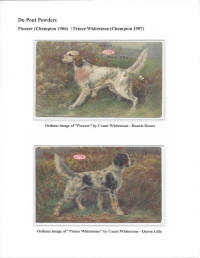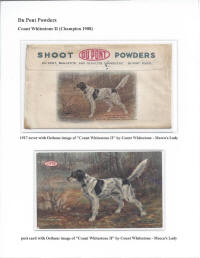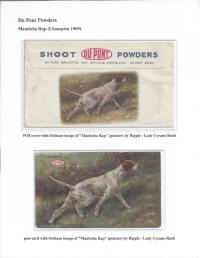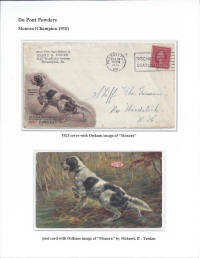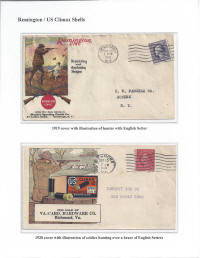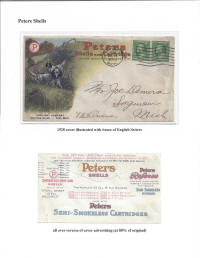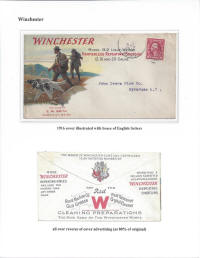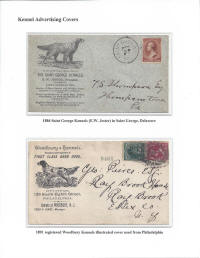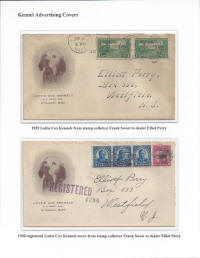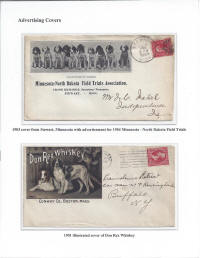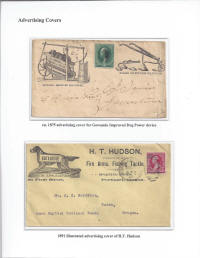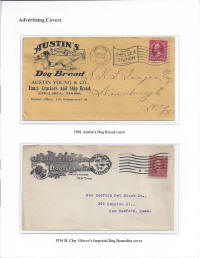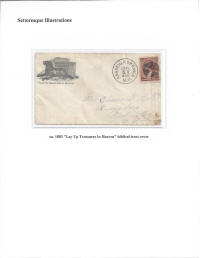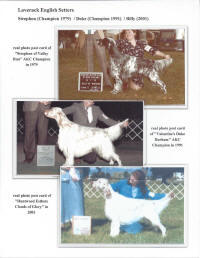|
|
|
The English Setter in America Click
thumbnails below to view full image. |
Before the 1800s the Setter dog breed included Gordon, Irish and English Setters. In 1825, Edward Laverack of Whitechurch, England bought a brace of English Setters who's progeny swept all field trial competition for the next 50 years. In 1871 Laverack sold two of his dogs, Dan and Dick, to R.L. Purcell Llewellin at a field trial at Shewsbury, England. The offspring quickly attracted the notice of sportsmen in North America. Dan sired Gladstone who quickly established himself as a top field performer and sire. Count Noble, a dog purchased directly from Llewellin by Dave Sanborn of Dowling, Michigan in the 1870s, was bred to Gladstone's daughters. Those breedings produced dogs that dominated the field trial circuit. One of these dogs, Count Gladstone IV, won the inaugural National Bird Dog Championship, held at West Point, Mississippi in 1896. Today the Llewellin name is given to the English Setter field dogs while Laverack's is given to the show dogs.
This exhibit will display some of the images of English Setters found on covers and cards used in the United States. Most of the early portrayals of English Setters only vaguely resemble the breed. The earliest cover found with a dog identified as an English Setter is shown below. The usage of English Setter images on covers is uncommon before the spectacular Du Pont Powder Company advertising products which included beer trays, cards and covers.
In 1917 Du Pont issued a series of 13 advertising postcards that reproduced paintings by noted sporting dog painter Edmund Henry Osthaus. Portrayed are the National Bird Dog Champions of 1896 as well as 1898 to 1910. All but one are Llewellin English Setters. In 1909 a Pointer was Champion and is shown here for completeness. At least nine of these designs were also utilized to make covers and all are shown. The remaining four are unreported on covers.
Richard Frajola (Jun 2014)



